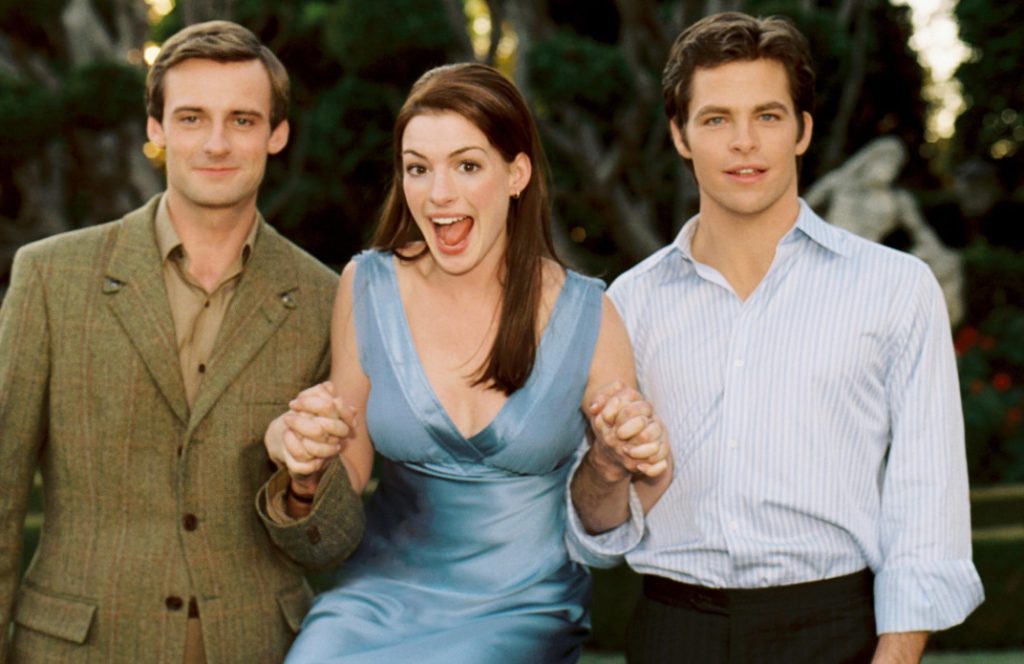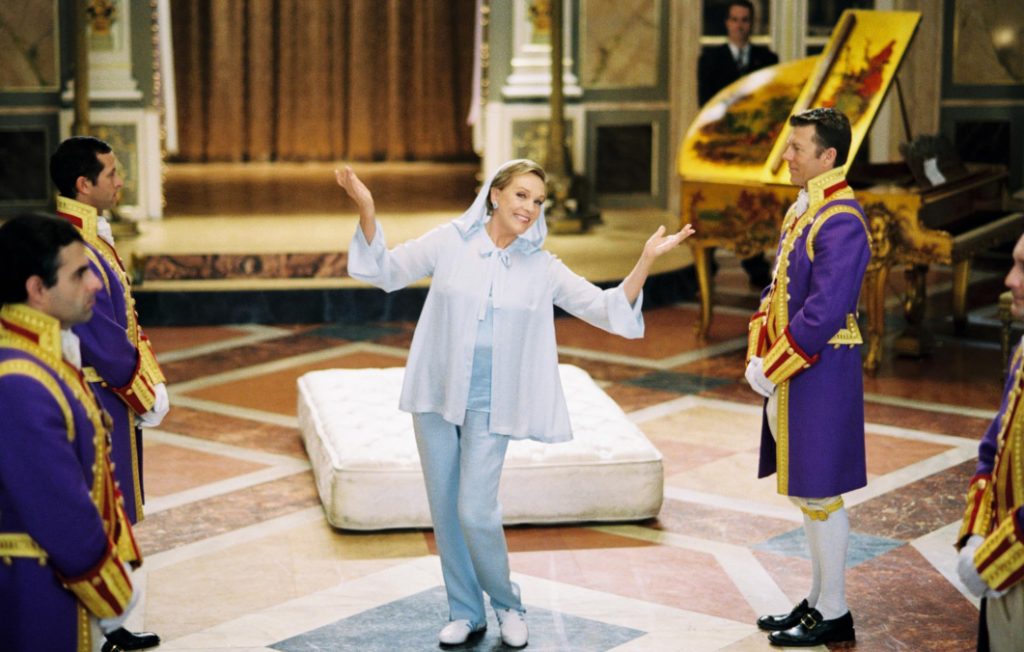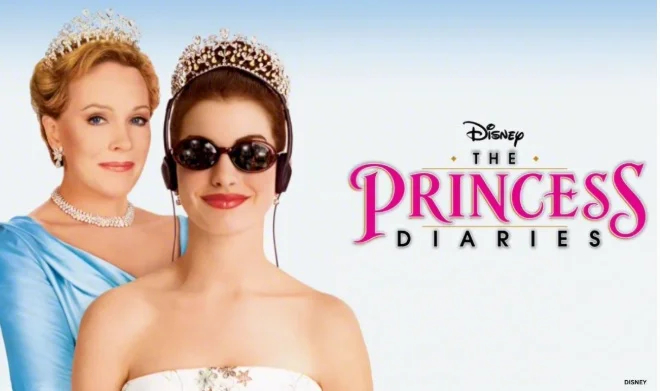The Princess Diaries 3 (2025)
I. PLOT OVERVIEW
Nearly two decades have passed since Mia Thermopolis (Anne Hathaway) unexpectedly found herself thrust into the role of Queen of Genovia. Over time, she has embraced the challenge with grace, humor, and an unshakeable resolve, all while staying true to the spirit of the young woman we first met in the original Princess Diaries films. However, as the monarchy faces new political challenges and shifting tides in the modern world, Queen Mia finds herself confronting the most delicate and personal transition of all: preparing to pass the crown on to the next generation.
Enter Princess Lily, her inquisitive and spirited young daughter. With her curiosity, natural charm, and a little bit of mischief, Lily begins to capture the hearts of the people of Genovia, as well as stir the political realm. As Mia faces the daunting task of navigating the future of the kingdom, her daughter’s blossoming royal role tests both her patience and her parenting skills. Together with her husband, Prince Consort Nicholas (Chris Pine), Mia juggles the demands of statecraft, a fiercely independent child, and the relentless pull of royal tradition that still looms large.
Directed with warmth, wit, and a heartfelt sense of nostalgia, The Princess Diaries 3 is a perfect blend of the humor, charm, and family-driven themes that made the original films such beloved classics. This is not just a story about royal duties and protocols—it’s a celebration of family, legacy, and the courage to redefine your destiny, even when the whole world is watching.
II. THEMES & EMOTIONAL DEPTH
At its heart, The Princess Diaries 3 is about legacy—how it’s passed down, how it shapes the future, and how it can be both a blessing and a burden. Queen Mia has spent years leading her kingdom with integrity, but now the time has come to face the most personal aspect of leadership: letting go. The film beautifully explores the emotional weight of parenting in the royal spotlight, with Mia learning how to balance her duty as queen with her duty as a mother.

Lily’s emergence as the next in line adds an emotional layer to the story. While she’s precocious, charming, and eager to embrace her role, her youth and independence challenge Mia’s carefully constructed plans. The film contrasts the old guard of Genovia’s royal traditions with the new, dynamic force of a young princess who has grown up with the advantages of the modern world—and the difficulties that arise when those worlds collide.
The themes of transition and growth extend beyond just the monarchy—this film is also about Mia’s own personal journey. As a mother, a wife, and a queen, Mia’s evolution reflects how individuals, like nations, must adapt to survive and thrive. The story captures a beautiful, universal truth: no matter how hard it is to let go of the past, the future is always waiting to be written.
III. CHARACTER EVOLUTION AND PERFORMANCE
Anne Hathaway, as Mia, shines once again in her iconic role, effortlessly blending her character’s humorous charm with the wisdom and strength she has acquired over the years. Mia is still the relatable, warm, and slightly awkward woman we fell in love with, but now she also carries the gravitas of a monarch. Hathaway’s performance continues to capture Mia’s vulnerability, as she navigates the emotionally taxing task of preparing her daughter for a future she never expected.

Princess Lily, played by a young, talented actress, brings a fresh energy to the film. She embodies the curious spirit of a young royal who, while learning about the weight of her legacy, is also determined to forge her own path. Lily’s character acts as both a mirror and a contrast to Mia’s—she’s independent, modern, and refreshingly unencumbered by the royal duties that Mia has carried for so long.
Chris Pine returns as Prince Consort Nicholas, bringing the same charm and subtle humor that made his character so endearing in the previous installment. His role as Mia’s supportive, yet somewhat befuddled, partner adds a grounding dynamic to the film’s more emotional moments, providing both comic relief and a solid emotional anchor.
Together, this ensemble casts a warm, loving portrait of a family on the cusp of transformation. Their collective chemistry makes the royal drama feel less like a spectacle and more like a relatable, heartfelt exploration of family life, even when the stakes are incredibly high.
IV. CINEMATOGRAPHY & DIRECTING STYLE
The Princess Diaries 3 continues to deliver visually stunning sequences, showcasing the picturesque beauty of Genovia. Director Garry Marshall’s signature warmth is infused into every scene, ensuring that each frame feels like an extension of the heart of the story: a love for family, country, and the process of change.
The cinematography plays with grandeur, from majestic palace settings to intimate family moments. The lavish costumes and vibrant landscapes of Genovia transport viewers back into the fairytale world that has defined the franchise, but they also ground the story in real, relatable emotion. This balance of fantasy and reality is key to the film’s success, as it allows the narrative to resonate on both a personal and grand scale.
V. FINAL VERDICT
The Princess Diaries 3 (2025) is a beautifully crafted, heartfelt continuation of a beloved franchise. It honors the original films while propelling the story forward into a new era of royalty. With emotional depth, humor, and an emphasis on the importance of family and legacy, it’s a worthy return to Genovia’s royal court.

Whether you’re a longtime fan of the series or a newcomer, this film offers an emotional, joyous ride that combines the whimsy of royalty with the real challenges of life’s transitions. It reminds us that while some things may change, the most important part of any story—whether royal or ordinary—is the bonds that hold us together.
Rating: 9/10
A touching, humorous, and inspiring continuation of Mia’s journey—a perfect blend of old-fashioned charm and modern relevance.
